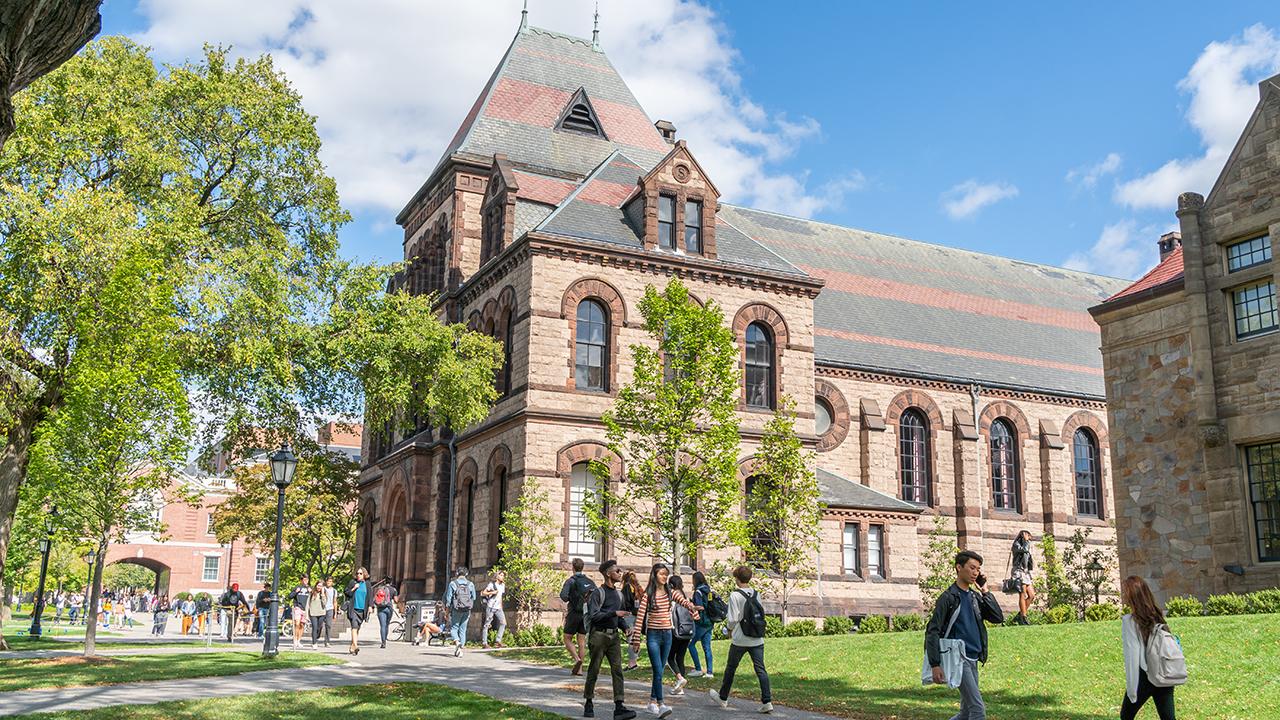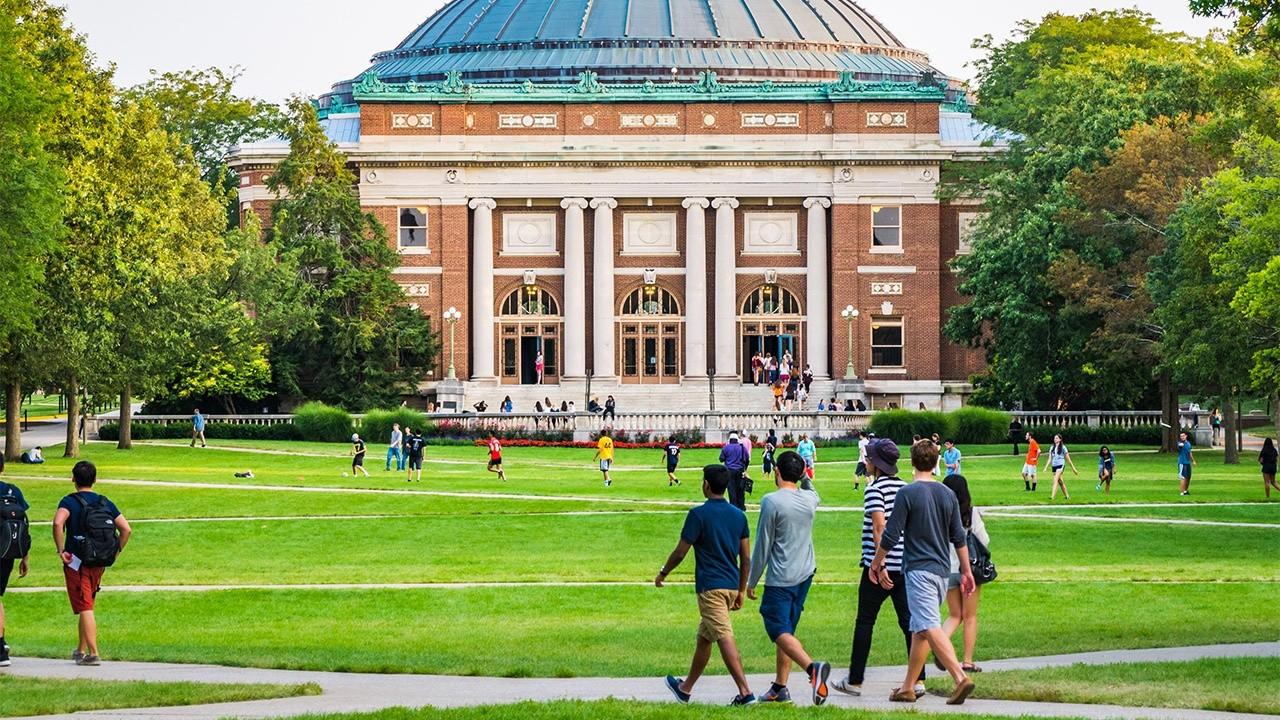Coronavirus pushes colleges to the breaking point, forcing 'hard choices' about education
Every source of funding is in doubt
Get all the latest news on coronavirus and more delivered daily to your inbox. Sign up here.
MacMurray College survived the Civil War, the Great Depression and two world wars, but not the coronavirus pandemic. The private liberal-arts school in central Illinois announced recently it will shut its doors for good in May, after 174 years.
Like many small schools, it faced declining enrollment and financial shortfalls. To lure prospective students, it was using steep discounts to its $30,000 listed tuition. Then the global health crisis brought unexpected costs for shifting classes online and partially reimbursing room and board for students forced to finish out the spring term at home. The loss of a $3-million-plus bridge loan was the final straw.
The pandemic "squeezed out the last rays of hope," said President Beverly Rodgers.
From schools already on the brink to the loftiest institutions, the pandemic is changing higher education in America with stunning speed.
Schools sent students home when the coronavirus began to spread, and no one knows if they will be back on campus come fall. Some colleges say large lecture classes and shared living and dining spaces may not return. Athletics are suspended, and there is no sense of when, or if, packed stadiums, and their lucrative revenue streams, will return.
CORONAVIRUS SETS STUDENT LOAN INTEREST RATES TO HISTORIC LOWS — HOW TO SAVE MONEY BY REFINANCING
Every source of funding is in doubt. Schools face tuition shortfalls because of unpredictable enrollment and market-driven endowment losses. Public institutions are digesting steep budget cuts, while families are questioning whether it's worth paying for a private school if students will have to take classes online, from home.
To brace for the pain, colleges and universities are cutting spending, freezing staff salaries and halting plans for campus building.
"The world order has changed," said Sundar Kumarasamy, vice president for enrollment management at Northeastern University, where 18% of students are international and may not be able or willing to travel to the U.S. come fall. "When we build models, we don't have a variable called virus."
For many schools, the pandemic is exposing flaws in their own business models. Even before the virus hit, many colleges and universities were running on razor-thin margins, with 30% of those rated by Moody's Investors Service showing operating deficits.
Published tuition rates had skyrocketed, but few students actually paid full price. That left schools fighting over a limited pool of wealthy prospects. Some schools had turned to international students to bolster revenue -- a strategy that may now prove to be a liability.

Pedestrians walk through the Northeastern University campus in Boston, Massachusetts, U.S., on April 20, 2020. (Adam Glanzman/Bloomberg via Getty Images)
WHAT IS A STUDENT LOAN INCOME DRIVEN REPAYMENT PLAN?
Schools also spent lavishly on science labs, high-end dorms and recreation centers to appeal to discerning students. The high fixed costs, including for faculty and staff, mean substantial expense-cutting opportunities are limited. Yet raising tuition could scare off families.
This spring, Northeastern added more candidates than ever before to its admissions wait list, as it and other institutions expect to see prospective students waffle over their decisions.
"It could have the makings of a perfect storm," said David Wippman, president of Hamilton College in Clinton, N.Y. The length and severity of the pandemic and resulting economic slowdown will determine the hit to the liberal-arts school, whose endowment before the market turmoil in March was about $1 billion.
Expecting revenue to decline, Hamilton has largely frozen hiring and tamped down spending. Mr. Wippman and his team have discussed drawing down a $50 million line of credit to pay the school's bills if the economic downturn is sustained.
SYRACUSE UNIVERSITY JOINS LIST OF COLLEGES REFUNDING HOUSING, MEAL-PLAN COSTS
Before the pandemic, about 100 of the nation's 1,000 private, liberal-arts colleges were likely to close over the next five years, predicted Robert Zemsky, a professor at the University of Pennsylvania's graduate school of education, in "The College Stress Test," a book published in February. He now says 200 of those schools could close in the next year.
Schools should expect a 15% decline in enrollment next fall and a $45 billion decline in revenue from tuition, room and board and other services, according to the American Council on Education, the nation's largest advocacy group for colleges and universities. Some administrators say those projections are too rosy.
Princeton University, one of the wealthiest in the country, with an endowment valued at $26 billion last year, announced a salary and hiring freeze. It is cutting back on all nonessential spending and won't renew employment deals with some contract workers.
"Economic conditions have been fundamentally altered in a matter of weeks, and universities across the country are having to reassess every aspect of their operations," Princeton Provost Debbie Prentice wrote to students, staff and others at the school. "We will have to make some hard choices in the weeks and months ahead."
Johns Hopkins University went from projecting a $72 million surplus this fiscal year to expecting a net loss of more than $100 million. Without austerity measures and a return to normal operations, President Ronald Daniels wrote to the school community, it could see a $375 million loss in fiscal 2021.
TUITION FEES AT COLLEGES GETTING MOST CARES ACT FUNDING: ONLINE VS. CLASSROOM
One major factor: revenues have plummeted as the Johns Hopkins Health System abandoned most elective procedures in response to the pandemic, illustrating a particular vulnerability for universities with major medical centers.
Mr. Daniels has detailed plans to cut salaries and suspend retirement contributions and capital projects.
Clemson University in South Carolina, a favorite to win the national football championship next fall if the season proceeds, gets nearly $31 million of its $128 million athletic budget from tickets, mainly football. No games, no money.
For the first time in a generation, some highly selective colleges will be a little less exclusive next year and possibly for years to come. The pandemic hit just as schools were preparing to send out acceptances to next year's freshmen. They admitted more applicants and padded their wait lists because of uncertainty over who would come.
Nearly overnight, a movement accelerated to make standardized test scores optional, with dozens more schools acknowledging that current high-school seniors can't take the SAT and ACT as usual. The University of California system, Cornell University and selective liberal-arts schools such as Amherst College and Haverford College said they won't require the SAT or ACT for students applying in the fall.
SMALL BUSINESS LOAN PROGRAMS STILL HINDERED BY GLITCHES
Dropping the test removes a barrier to entry, something many schools have debated before. College counselors say it could be tough for schools to abandon the new policies when the pandemic eases.
Even before the coronavirus, 2020 was shaping up to be a tumultuous year for colleges.
Under pressure from the Justice Department, the National Association for College Admission Counseling last fall voted to allow schools to more aggressively recruit applicants -- even those who have already committed to attending other institutions. Summer poaching already happened, but now it is expected to intensify.
Last year, 60% of schools missed their fall enrollment targets, according to a survey by the Council of Independent Colleges, American Association of State Colleges and Universities and Chronicle of Higher Education. This year, about half of colleges that used the Common Application reported a drop in applications.
The University of Pennsylvania recently emailed newly admitted international students, reminding them of the option to defer their admission for a year given concerns about global travel and visa processing.
Students who already are enrolled are rethinking their academic plans, too. James Hunter Long, a junior at Vanderbilt University who is finishing out the semester online from his family's home in Austin, Texas, said he likely will take a semester or year off if classes remain online in the fall.
THE 10 COLLEGES RECEIVING THE MOST CORONAVIRUS AID FROM THE CARES ACT
"You're not going to Vanderbilt to go online," said Mr. Long, 21 years old. He said part of what he had been paying for was athletics, the residential college experience and the chance to grab coffee with professors.
Lewis and Clark College in Portland, Ore., which gets about 70% of its revenue from tuition, is assessing different scenarios, including operating with 1,500 undergraduates instead of 2,000. "That's not my goal," said President Wim Wiewel. But "it would be irresponsible not to do scenario planning for various forms of pain."
Admissions officers there have been emailing admitted students who live in Washington state and Oregon, emphasizing the advantage of attending a school nearby in case they need to return home suddenly.
Opening campuses back up to students won't mean a return to normal college life. Large, in-person lecture classes with hundreds of students have been scrapped from the calendar at Utah State University, while West Virginia University is considering providing personal protective equipment for students and staff.
Montclair State University in New Jersey plans to trim its elective courses next fall because it eliminated some non-tenure-track instructor jobs to contend with a new budget hole. Classes that help students meet graduation requirements likely will be thinned out as well, making for fewer, larger classes.
If the virus remains a threat in the fall, some schools are considering staying entirely online or having a smaller population of students rotating through campus to avoid crowds. Beloit College in Wisconsin is blowing up its semester model, instead offering two shorter, intensive courses at a time, hoping to remain flexible for on-campus or online delivery.
Colleges say they worry about students dropping out because they can no longer afford tuition.
GET FOX BUSINESS ON THE GO BY CLICKING HERE
"How many students can return?" said Wayne A.I. Frederick, president of Howard University in Washington. "Did their parents lose jobs? Do they have to join the workforce to help a sick parent?"
The historically black college anticipates a $39 million revenue hit from the virus, and will end the year deeper in the red than expected.
Hazel Fernandez, a senior at Anaheim High School in California, was already worried about paying for college and, before the pandemic, had shifted her sights from the University of California, Santa Barbara, to San Diego State University, which she said would be less expensive.
Now, her father's construction-job hours have been cut and her mother, a factory worker, was laid off.
"I think right now, if I had to choose, I would probably go to community college" and live at home, she said.
Davidson College in North Carolina will allow students to defer their fall 2020 tuition payments for up to a year. That will be a major financial burden for the school, but administrators say they hope to give students a bit of breathing room and avoid any dropping out, even for a semester, if family income was affected by the pandemic. The school will continue to get tuition money from federal loans and grants even when students delay their payments.
"We have to look at all of our resources right now," said Mary Marcy, president of Dominican University of California. That includes how the school spends the earnings from its roughly $30 million endowment and whether it is time to sell some land to boost cash on hand.
New academic programs such as a pre-med offering, Dr. Marcy said, were intended to help diversity revenue. Now, she said, "they may end up being ballast" to just keep the school afloat.
Write to Melissa Korn at melissa.korn@wsj.com, Douglas Belkin at doug.belkin@wsj.com and Juliet Chung at juliet.chung@wsj.com
























